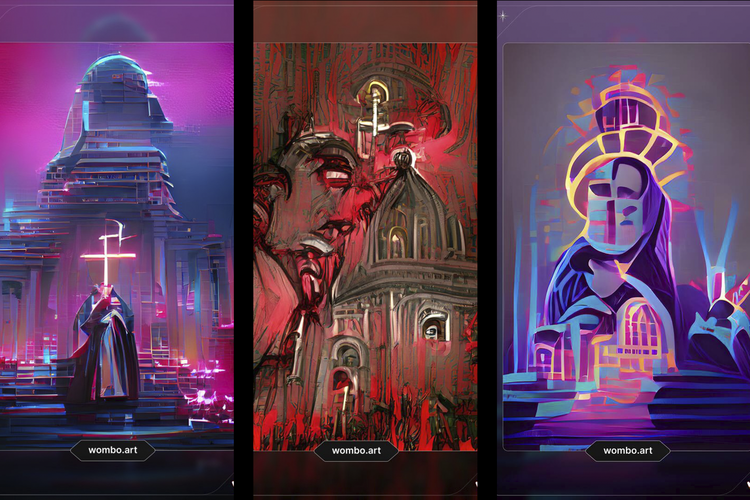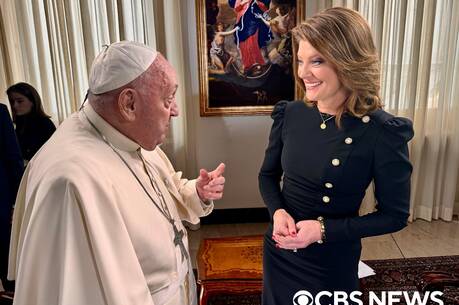Artificial intelligence has been getting scarily good lately, and people are starting to notice.
The internet has been ablaze over the last few months with surprisingly good artwork and images generated by artificial intelligence. The technology has come a long way, and a recent crop of websites have emerged that purport to create A.I.-generated images or drawings from any user-submitted prompt.
They have become instant internet hits, and why wouldn’t they? That I can type in “duck sitting in an office chair eating waffles,” for instance, and come back with a picture of, well, a duck sitting in an office chair eating waffles, evokes a certain awe even in my generation of digital natives. There’s an endless novelty to it all—I’ve spent hours on these websites asking the ever-mysterious algorithm to come up with different creations, each more esoteric and weird than the last. Like a seven year-old awed by the magician’s sleight of hand, I say, “Do it again, do it again,” and the A.I. complies.
After a while, though, I wanted more. Sure, A.I. can generate a picture of a “duck sitting in an office chair eating waffles.” It’s easy enough to recognize the constituent parts and mash them together in a way that makes sense. What happens, however, if I put in an abstract concept? What does the algorithm have to say about capitalism? What does it have to offer for justice? What about love?
Sure, A.I. can generate a picture of a “duck sitting in an office chair eating waffles.” What happens, however, if I put in an abstract concept?
What about Catholicism?
So I spent one very fun evening running the term “Catholicism” through all of the filters of “Dream by Wombo,” an A.I. image generator that tries to create artwork in different styles based on the user’s request. One filter creates artwork in the Ukiyo-e style of Japanese art. Another tries to replicate watercolor works. In total, there are 22 different styles in which I could render the A.I.’s understanding of our faith.
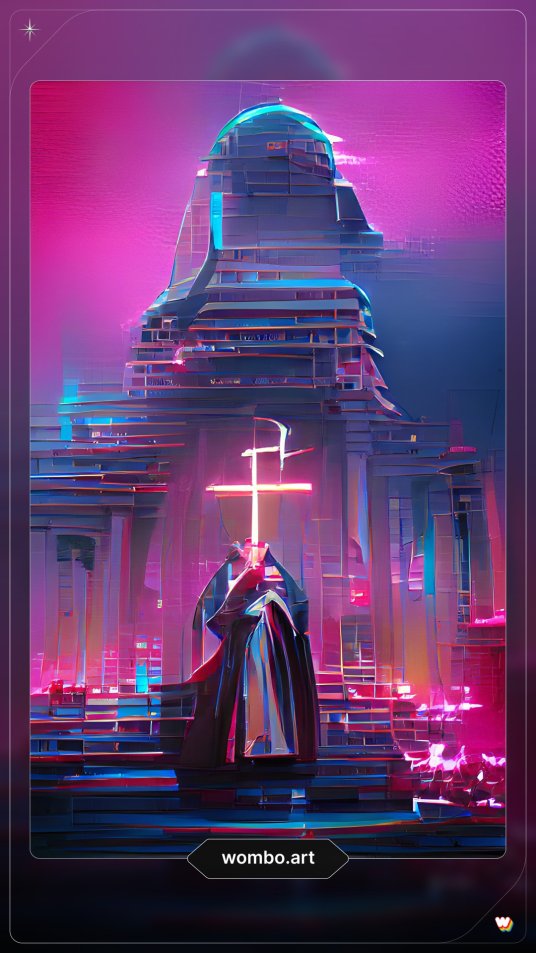
On an aesthetic level, the results were stunning. Some of the images were just remarkably beautiful, even if I couldn’t understand what exactly was going on. But I think that many are also thematically revelatory.
The first thing that stood out was the intense variety of focuses these images had. Some, like the Ghibli, Provenance and Watercolor filters, honed in on the intricacy of Catholic architecture. This class of paintings associated Catholicism with some of its most recognizable cultural icons and its unique emphasis on communicating the faith through the beautiful. Indeed, this way of envisioning the Catholic “aesthetic” has a lot of weight in popular culture, both among those who grew up in the church and among a growing internet subculture interested in a certain countercultural Catholic beauty.
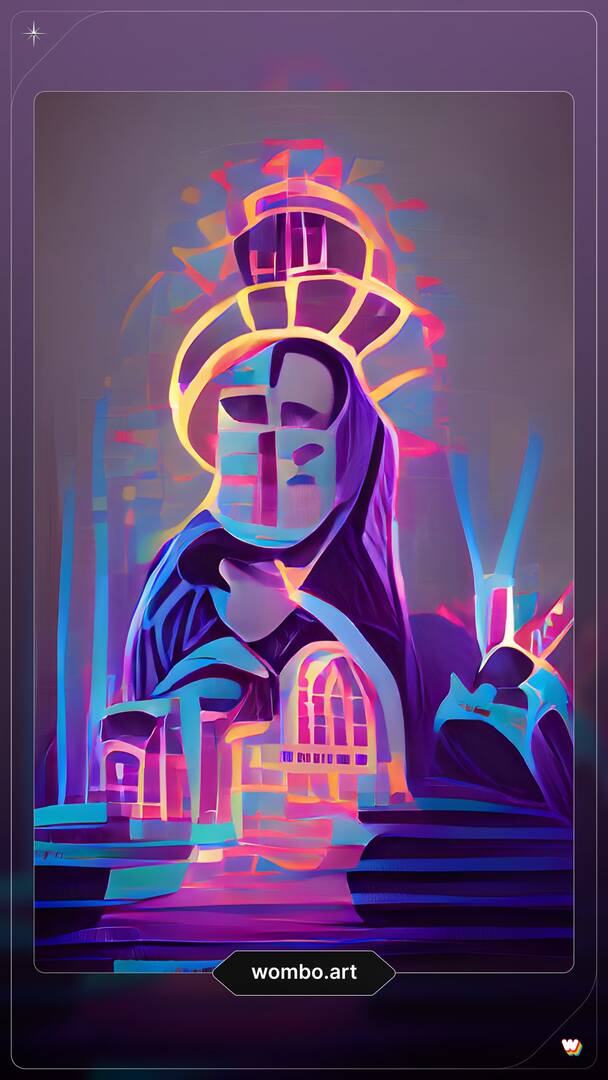
Another recurring theme is a special attention to the Blessed Mother. Though often hard to make out in some images, Mary makes a fair number of appearances throughout the filters. There is a stunning Blacklight Mary (who might be reminding us to wear masks?), the vague impression of a Vibrant Mary, who waits for us in every color of the rainbow at the Kingdom of Heaven, and even a slightly disturbing Steampunk Mary, who reaches out her bionic arms to embrace all of humanity.
Because devotion to the Blessed Mother is so distinctly Catholic, it makes sense that she would make a few “apparitions” in the algorithm. Once again, the A.I. was drawn to one of the “weirdest” aspects of our faith, one that a lot of other Christians don’t quite get. It enthusiastically channels the long tradition of Marian artwork throughout Catholic history, often with direct allusions to specific motifs of the Catholic artistic tradition. Most remarkable to me was the Moonwalker theme, which created what seems quite a lot like traditional paintings of Mary’s many apparitions around the world.
“To Jesus through Mary,” as they say.
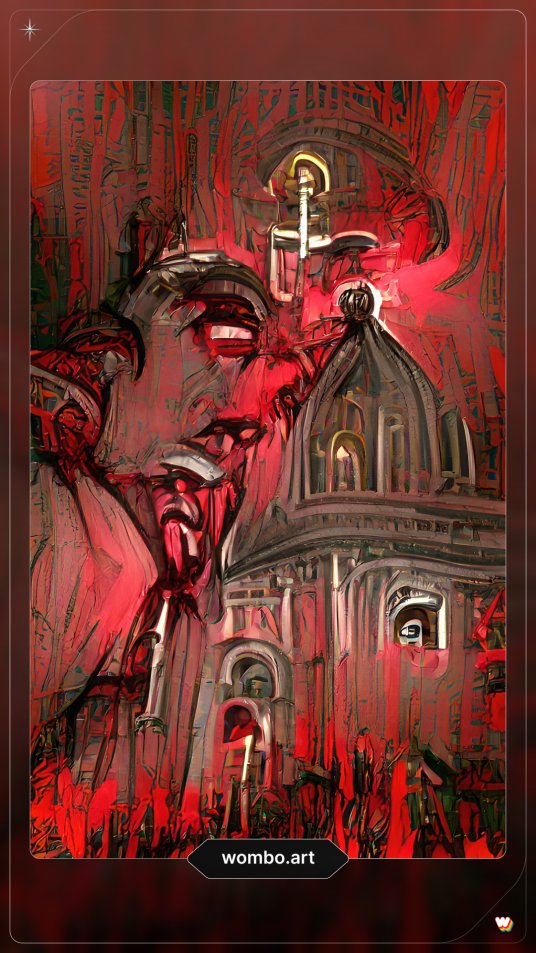
Other results are instructive in their own right. Take the remarkably eerie and concerning “Death” filter, which casts any prompt in hues of reds and blacks. In it, the face of a Christ figure glares down over a cathedral that reminds me of St. Peter’s in Rome. It communicates at once two radically different messages. The first, perhaps, is that Christ looks in sadness on the many failures of the institutional church over the years. The second, though, is equally instructive—one gets the impression that Jesus is watching over his church, guiding and protecting her.
I could go on and on. Some figures employ the styles and motifs of eastern Catholicisms, others depict the Holy City Jerusalem. Some filters draw us towards what seems to be the Eucharist, while others point to the Cross shining in the bright light of Heaven. There were simply so many different angles the algorithm took.
The most striking of all, though? When I didn’t put in a filter at all, the only discernible result in the image was the scourged and sullen body of the crucified Jesus, bowing his head like he does in the crucifix that hangs over every Catholic church. But you cannot even see the wood of the Cross, really. It’s not the focus—our attention rests squarely on the gloriously and tragically human body of our ultimate high priest, who offers himself as sacrifice for the world. As it should be: “For I resolved to know nothing while I was with you except Jesus Christ, and him crucified” (2 Cor. 2:2).
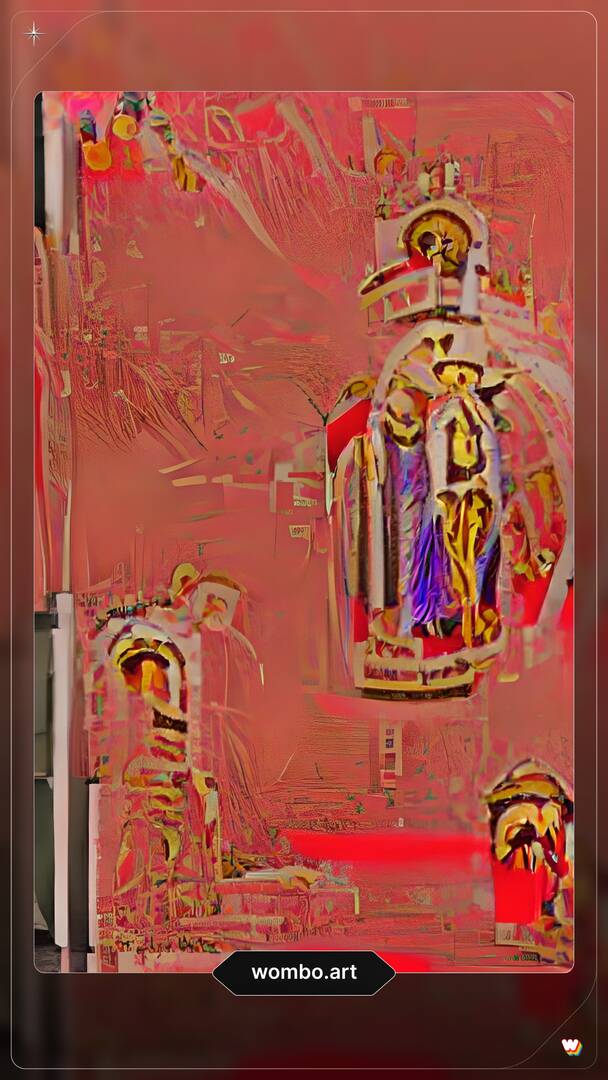
So what do we make of this strange collection of artificial impressions? I’m not entirely sure; some of these images feel like Rorschach tests. I can, however, tell you that after 22 rounds of waiting for filtered images to load, I left the exercise grateful, joyful, even, that the Catholic tradition leans on 2,000 years of a faith that is deeply beautiful in both an aesthetic and theological sense.
I cannot wait to see what cathedrals look like in the Kingdom of Heaven, and I gratefully await meeting the Blessed Mother in a New Jerusalem. Most importantly, though, I long to run my fingers through the wounds of the Risen Lord, and believe because I have seen.
Until then, though, I participate in a faith that is sufficiently majestic, from any possible angle or filter, for me to believe without having seen. And if these A.I. ever end up developing feelings, as has been so often theorized, I am sure they will understand exactly what I mean.


